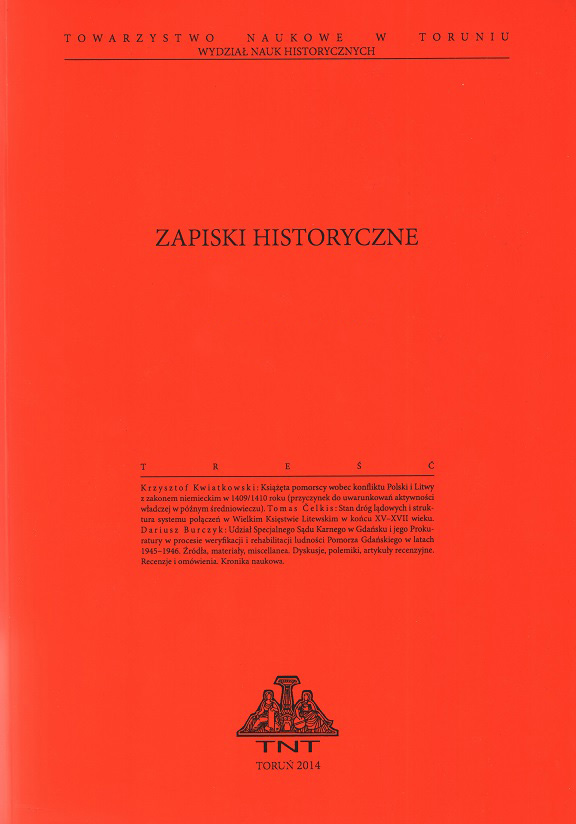Już bezprawie czy jeszcze prawo? O główszczyźnie i wróżdzie w Prusach Książęcych i Prusach Królewskich w czasach nowożytnych
Lawless or Still Lawful? About Wergild (man-price) and Vendetta in the Duchy of Prussia and Royal Prussia in the Early Modern Times
Author(s): Grzegorz BiałuńskiSubject(s): Cultural history, History of Law, 16th Century, 17th Century, 18th Century
Published by: Towarzystwo Naukowe w Toruniu
Keywords: early modern times;criminal law;Chełmo law;the General State Laws;Prussia;the judicial system;Warmia;bloody retaliation;
Summary/Abstract: The wergild as a financial punishment for husband killing survived in Prussia until the mid-18th century, but the general rule was that the perpetrators of husband killing were sentenced to death. The reason why the wergild survived for such a long time in Prussia was the fact that courts applied the Chelmno law, according to which the wergild was recognized by tradition and also found in subsequent registers of the Chelmno law. At the beginning of the early modern period the wergild could apply only in case of assassinations committed in self-defense or by accident; deliberate crimes were subject to the law of retaliation. Yet, the law of retaliation could not be applied in relation to groups. With time the wergild could not be used out of court and the law of retaliation was abolished. The next step restricting the use of the wergild was the fact that it was to be applied in case of unintentional or accidental homicides; moreover, in case of killing in self-defense the perpetrator was exempt from the wergild.It was the court that passed a sentence of the wergild, but in cases of reconciliation the sentence was passed by other arbitration bodies. The wergild was allowed mainly among noblemen, which was in accordance with the Polish law of the time. The circle of people entitled to the wergild was reduced to the closest agnate, while in case of husband killing it applied only to the perpetrator. The wergild was no longer shared with the authorities; it was only the judge who received the fee referred to as multa. The value of the wergild was determined by the rank of the office held by the assassinated person. Moreover, the wergild constituted a kind of financial unit used to establish the value of fines and compensatory damages. Apart from the compensation in the form of financial gratification, the wergild constituted the indemnification for physical injury or damage to honor. The latter could also entail some additional punishment e.g. the act of submission.Until the mid-17th century the tradition of bloody retaliation (vendetta) was practiced at least among the nobility. It was illegal and punished by death sentence. Its alternative continued to be the possibility of settlement. The retaliation was limited only to the perpetrator of the homicide.
Journal: Zapiski Historyczne
- Issue Year: 81/2016
- Issue No: 2
- Page Range: 47-64
- Page Count: 18
- Language: Polish

